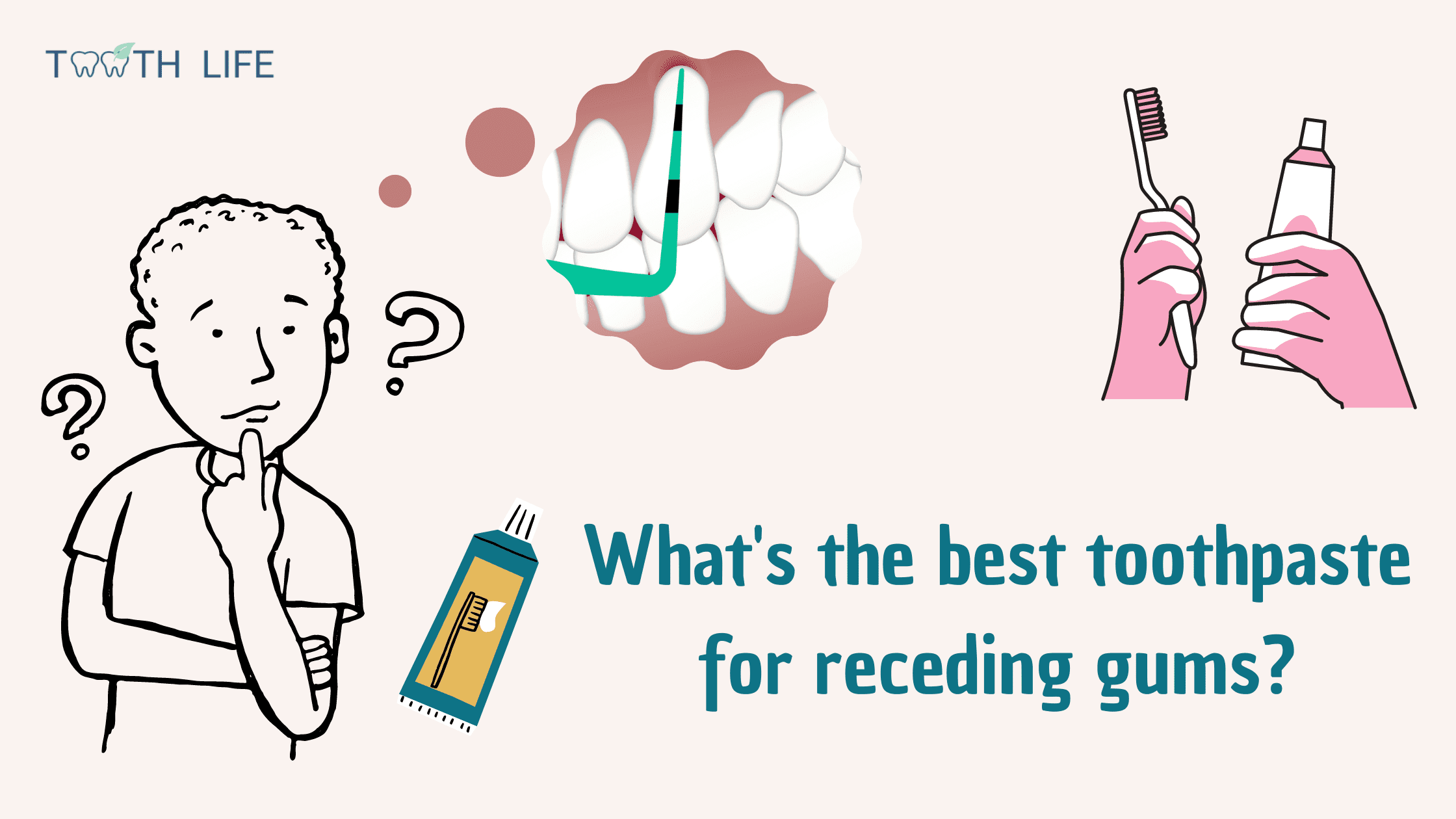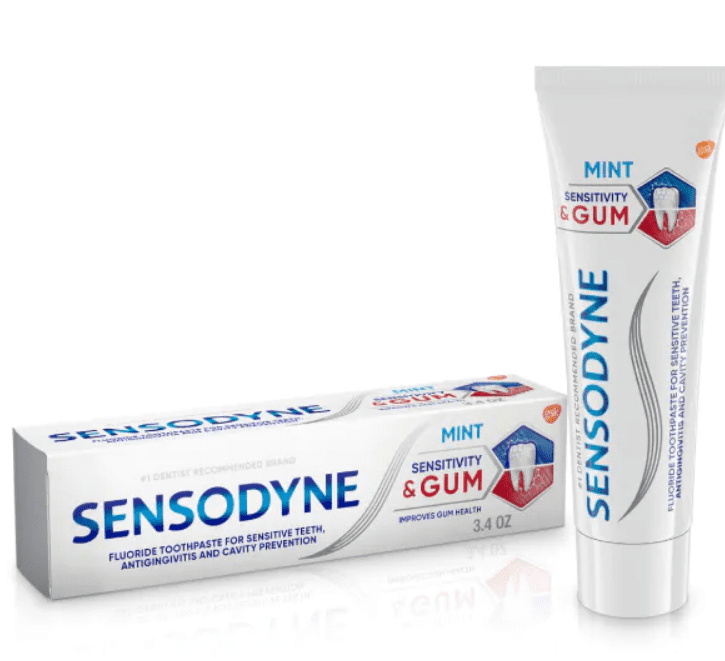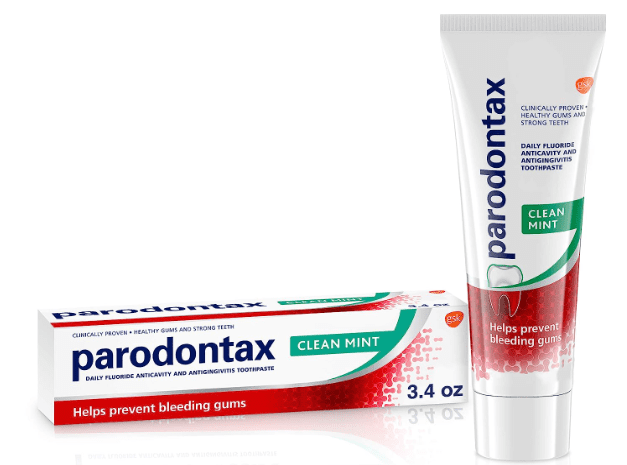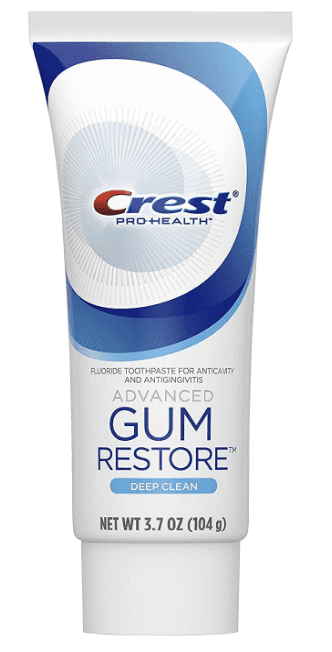Receding Gums? Discover the Best Toothpaste for Optimal Gum Care
 When it comes to addressing receding gums, selecting the right toothpaste can be a great help.
When it comes to addressing receding gums, selecting the right toothpaste can be a great help.
Ideally, you should look for toothpastes with properties like antiplaque action, anti-sensitivity benefits, and low abrasivity to ensure gentle yet effective care for your gums.
With so many toothpaste options available, it's natural to feel overwhelmed about which one to choose. But fear not! In this article, we'll help you make the best choice for your specific needs and outline additional steps you can take to deal with this common problem.
This article may contain affiliate links, which means I may earn a small commission at no additional cost to you if you make a purchase through these links. I only recommend products and services that I believe will add value to my readers. Thank you for supporting my blog!
Our Top Recommendations
1. Sensodyne Sensitivity & Gum Toothpaste:
2. Parodontax Active Gum Repair Breath Freshener Toothpaste
3. Crest Pro-Health Advanced Gum Restore Toothpaste:
In this article:
1. Can you treat receding gums at home?
2. What can toothpaste do for your receding gums?
3. The best ingredients to look for when buying toothpaste for receding gums:
4. The best toothpastes for receding gums:
5. Other things to consider when dealing with receding gums:
Can you treat receding gums at home?
Healing or regrowing receding gums is one of the most frequently asked questions.The short answer is that once your gums have receded, it’s unfortunately not possible for them to grow back naturally without surgery.
But here’s the good news: while you can’t reverse gum recession on your own, you can take steps to stop it from getting worse and to keep your gums strong and healthy.
Before jumping into specific treatments or toothpaste, it’s crucial to catch what’s causing your gums to recede in the first place.
For example, if you’ve been brushing too hard, switching to a soft-bristled toothbrush and using a gentler technique can make a big difference.
If you suspect you have gum disease, see your dentist as soon as possible. Advanced gum disease is not something you can treat on your own.
Always remember: the first line of treatment should be removing the root cause of your gum recession. Once that’s under control, you can support your gums further with the right tools.
What can toothpaste do for your receding gums?
When choosing a toothpaste for receding gums, there are two main things to consider:- Manual action or mechanical treatment: This involves physically removing plaque, mostly done with your toothbrush, not the toothpaste. The actual brushing motion is what disrupts plaque buildup.
- Chemical treatment: Here’s where toothpaste, mouthwash, and antibacterial products come into play. Think of them as ways of fighting bacteria that have survived the manual action.
The physical cleaning action, whether from an electric or manual toothbrush, is what matters most. It does most of the job of removing plaque, which is the main culprit behind receding gums.
So, before choosing a toothpaste, focus on getting the basics right:
- Choose a soft toothbrush—whether manual or electric (electric toothbrushes often do a better job at cleaning).
- Brush correctly to ensure you’re cleaning both your teeth and gums effectively.
- Brush gently! Too much pressure when brushing is the second leading cause of receding gums, right after plaque buildup.
- Floss daily.
Now, back to the main question - what exactly can toothpaste do for your receding gums?
Toothpaste won't make your gums grow back, but certain active ingredients can help fight plaque buildup and reduce inflammation, thus improving and strengthening your gums.
The chemical action of toothpaste can target bacteria that may be present inside the gum tissue and not easily accessible to the toothbrush.
It can also help combat tooth sensitivity, a common issue that often arises with receding gums.
But no matter what toothpaste you use, if you do not brush with the correct technique or skip flossing, plaque will remain and continue to harm your teeth and gums.
The best ingredients to look for when buying toothpaste for receding gums:
Toothpastes designed for receding gums are formulated with active ingredients that offer antibacterial and anti-sensitivity benefits, along with a gentle texture that won’t irritate your teeth or gums.1. Antibacterial:
The most well-known and widely used ingredient in toothpaste is fluoride. It plays a dual role: strengthening teeth to make them more resistant to cavities, while also providing antibacterial protection.
Among the various fluoride combinations, the most effective and scientifically proven one for combating gum disease is Stannous Fluoride.
In addition to fluoride, some toothpastes contain other antibacterial ingredients like triclosan and chlorhexidine. However, their use and effectiveness are still controversial.
- Triclosan: Potential side effects on hormonal balance.
- Chlorhexidine: Interacts with other toothpaste ingredients and loses its effect.
2. Anti-Sensitivity:
Receding gums can lead to exposed tooth roots, causing heightened sensitivity to temperature and sweet foods. Choose a toothpaste with desensitizing properties to increase your comfort.
Active ingredients like Potassium Nitrate, Hydroxyapatite, Stannous Fluoride, Strontium Chloride, and Novamin are known for their desensitizing effects.
3. Mildly Abrasive:
Toothpaste needs some level of abrasiveness to remove plaque and surface stains. However, excessive abrasiveness can harm your teeth and gums.
Many studies have shown that the wear effect of the brushing action is influenced more by the toothpaste's abrasiveness rather than the toothbrush itself.
The level of abrasiveness in toothpaste is measured by a value known as RDA (relative dentin abrasivity). The International Organization for Standardization has set a limit of 250 for this value.
However, if you experience tooth sensitivities or have receding gums, it is advisable to choose a toothpaste with an RDA value of less than 80. This will ensure gentler brushing, reducing the risk of further sensitivity and potential damage.
The best toothpastes for receding gums:
1. Sensodyne Sensitivity & Gum Toothpaste

Sensodyne Sensitivity & Gum is recommended for sensitive teeth and early signs of gum disease. It contains both sodium fluoride and stannous fluoride as active ingredients.
Stannous fluoride not only has antibacterial properties but also effectively reduces tooth sensitivity. It works by blocking tiny exposed holes in the teeth, preventing external stimuli from reaching the nerves. This way, it helps fight bad bacteria and soothes sensitive teeth at the same time.
2. Parodontax Active Gum Repair Toothpaste

Parodontax is specifically formulated for gum disease. Like the previous one, it also has stannous fluoride as an active ingredient. With regular use, it has been clinically proven to reduce bleeding gums, inflammation, and sensitivity issues.
What makes it even more suitable for gentle oral care is its low abrasiveness, with an RDA value of 56 (most toothpastes have an RDA value of around 100).
Parodontax is a good option if you want effective yet gentle care and cleaning for your gums and teeth.
3. Crest Pro-Health Advanced Gum Restore Toothpaste:

Crest Pro-Health Advanced Toothpaste also contains stannous fluoride. But it comes with an additional key ingredient: Amino Acid Glycine.
A study published in the Journal of Clinical Periodontology showed that glycine acts as a stabilizer for stannous fluoride. This combination allows stannous fluoride to penetrate deep into the plaque, providing a thorough and effective clean while significantly reducing the toxins produced by bacteria.
The only drawback is that this toothpaste is more abrasive than the options mentioned above.
Other things to consider when dealing with receding gums:
When dealing with receding gums, it’s important to consider all potential risk factors. Here are a few helpful tips to keep your gums healthy:- See your dentist: This should be your first step if you notice your gums are receding. Your dentist will check for signs of advanced gum disease, which cannot be treated at home. Regular dental checkups are also important for controlling plaque and tartar and for catching dental issues early, when they’re easier to treat.
- Improve your oral hygiene: A thorough oral care routine will help you fight plaque more effectively. Don’t forget to floss every day to remove plaque and food particles from between your teeth and along the gumline.
- Diet:
A balanced, healthy diet supports not only your overall health but also keeps your gums strong and healthy by fighting oxidative stress and chronic inflammation. Certain nutrients—like omega-3s and vitamins C and D—are especially beneficial for gum health.
Try to reduce unhealthy foods, such as excess sugar, processed items, and unhealthy fats, which promote chronic inflammation. These foods also fuel harmful oral bacteria, allowing them to thrive and potentially cause damage. - Stop or reduce smoking: Tobacco and its by-products contain toxins that damage your gums and reduce blood flow. This makes your gums more vulnerable and speeds up how quickly gum disease can get worse.
- Try oil pulling: Oil pulling is an ancient practice that involves swishing oil (like coconut or sesame oil) in your mouth for about 15–20 minutes. Some studies suggest it can help reduce harmful bacteria, lower inflammation, and support gum health. While it shouldn’t replace regular brushing and flossing, it can be a helpful addition to your routine.
- The role of oral hygiene: does toothbrushing harm? - PubMed (nih.gov)
- Antimicrobial effects of a stannous fluoride toothpaste in distinct oral microenvironments - PubMed (nih.gov)
- What Is Stannous Fluoride and Why Does Parodontax Use It?
- Effect of a stannous fluoride toothpaste on dentinal hypersensitivity: In vitro and clinical evaluation - PubMed (nih.gov)
- SF_AminoAcidGlycine-CellRecovery_Rev2.pdf (crestoralbproshop.com)